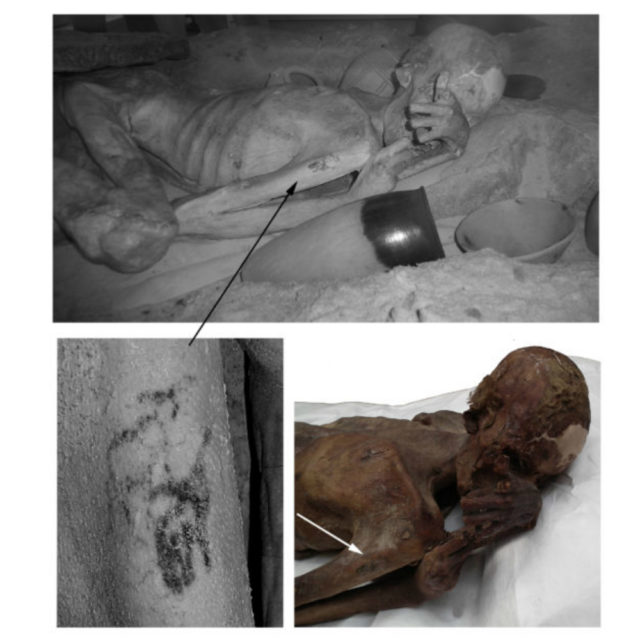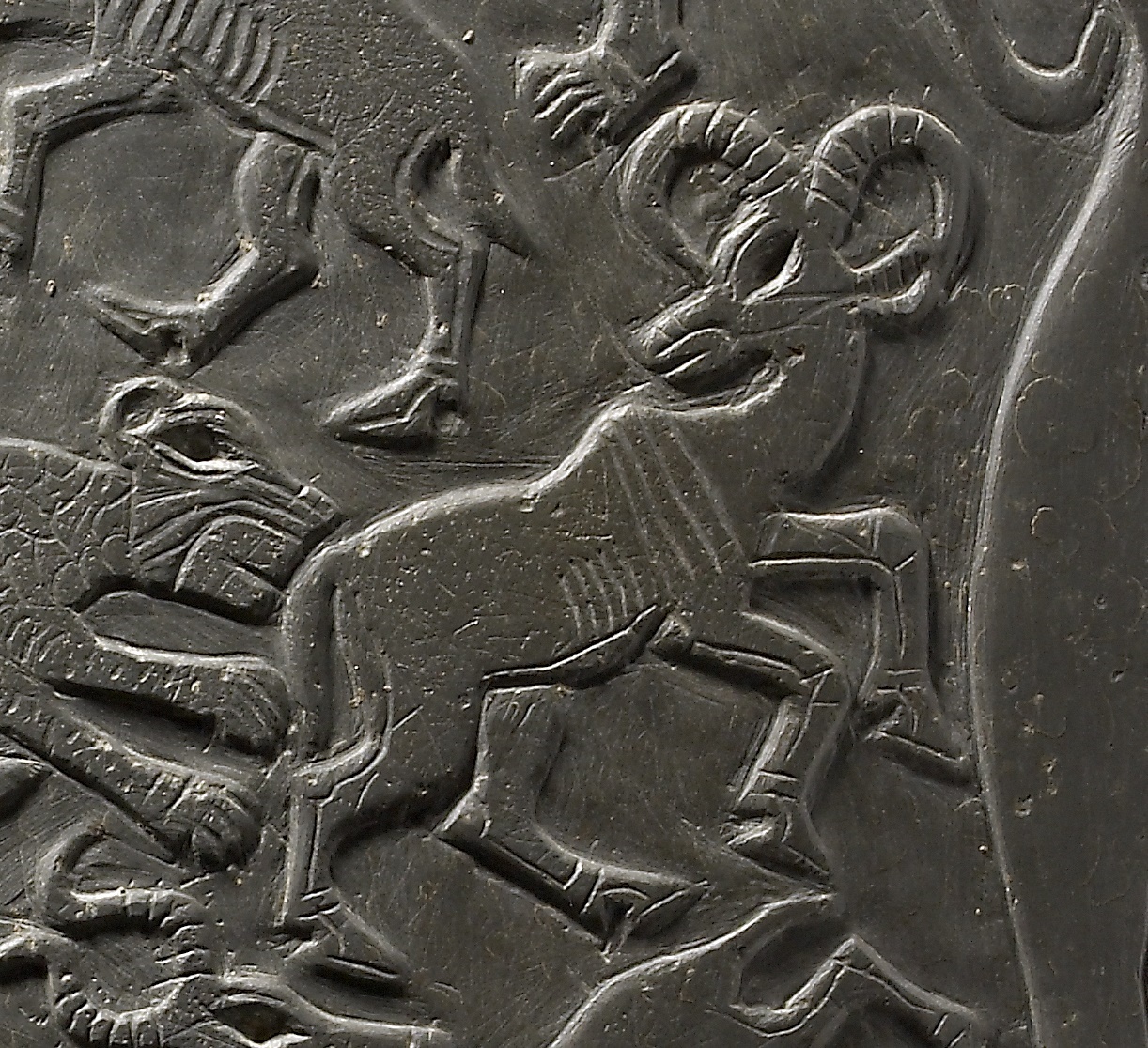They have been popularised by the likes of David Beckham, but the world’s oldest figurative tattoos have recently been discovered on an Egyptian mummy at the British Museum.
The find dates tattoos, which contain imagery rather than geometric patterns, 1,000 years earlier than previously thought.
Tattoos of a wild bull, a symbol of power and virility, and a Barbary sheep, were found on an Egyptian male mummy dating to between 3341 and 3017 BC.

The 5,000-year-old mummy, which is preserved naturally, has been one of the star displays at the British Museum, visited by millions each year, since its discovery in a cemetery over 100 years ago.

Previous research revealed that the man, known as Gebelein Man A, died a violent death between the ages of around 18 to 21, from a stab wound to his back.
But dark smudges on his arm, which appeared as faint markings under natural light, have now been examined.
Infrared technology has now revealed that the smudges were tattoos of two slightly overlapping horned animals well known in Predynastic Egyptian art.
Linear and s-shaped motifs were identified on the upper arm and shoulder of a “mysterious” female mummy, who “may have been a person of importance”.

Daniel Antoine, the British Museum’s curator of physical anthropology, said the male mummy was “one of the most popular displays at the British Museum”.
“His remains were preserved naturally perhaps because he was buried in the peak of summer or was in a shallow grave.
“We are very confident that this is tattooing and not painted or decorated. It would have been carried out with some type of needle made from bone or copper.
“These tattoos push back evidence of tattooing by 1,000 years.”
The oldest known tattoos in the world were discovered on Otzi the Iceman, dating from around the same time, but they are purely geometric.
“It is quite a departure to see people putting images on their body and that will have resonance with people today,” the curator said.
“Incredibly, at over 5,000 years of age, they push back the evidence for tattooing in Africa by a millennium.”
The findings are published in the Journal of Archaeological Science.
